Exo-suit, future or fiction?
Hello, my dear Steemians, I want to talk to you about a topic that catches my attention, I think I can cause this same feeling in you.
I commented that one of the things that I like most apart from science and technology, is the cinema, especially futuristic movies, where technological advances are shown, important, that is, and I mention an example, IRON MAN, this super hero, who has an incredible armor, which has a lot of functions, including flying, super strength, laser, and a lot of other applications, another that I liked a lot and not so much for the plot, but for the advances technological, was, EDGE OF TOMORROW, in this film, soldiers have a super suit, which magnifies the strength, speed, and skill of those who use it.
And what do these movies have in common?
Exo-suit.
Mechanical exoskeleton, power exoskeleton, robotic exoskeleton, also known as power armor, exomarc or exotrace, is a mobile machine consisting primarily of an external frame (comparable to the exoskeleton of an insect) worn by a person and an engine power system or Hydraulic that provides at least part of the energy for the movement of the limbs. It helps the bearer move and performs certain types of activities, such as carrying weight.
During its operation, a series of biometric sensors detect the nerve signals that the brain sends to the muscles of our extremities when we are going to start walking. The exoskeleton processing unit then responds to these signals, processes them and makes the exoskeleton act in a fraction of a second.
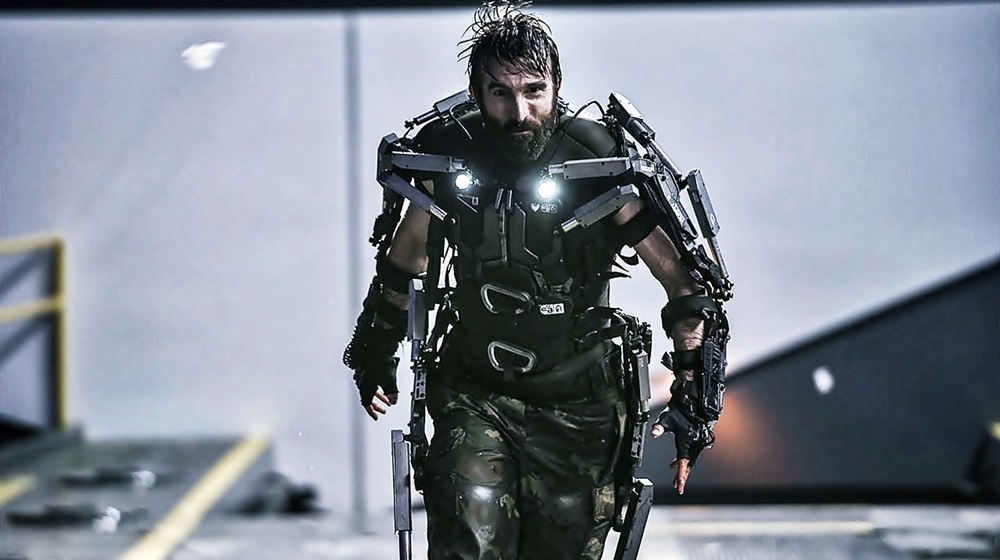
I want in this opportunity to bring to your consideration a series of exo-suits that are already being tested worldwide, in the different countries where they have started the careers for making this new technology, that we see in different movies, be a palpable arena for the different uses, in which they want to have.
1.-HULC
It is an exoskeleton designed for the battlefield, and its name indicates its function: Human Universal Load Carrier (HULC, or "human universal cargo carrier" in Portuguese). It is capable of transporting up to 90 kg with its titanium legs, and allow free movement of the user.
According to Lockheed, the company responsible for HULC, a soldier can march with a full load at 4.8 km / h and run briefly at 16 km / h if the equipment is used.
The system is designed to reduce tension in the legs and muscles of the back, which is the most common cause of injuries among soldiers, and comes with "Lift Assist Device", a device that allows the soldier to lift heavy loads with the strength of two or more men.
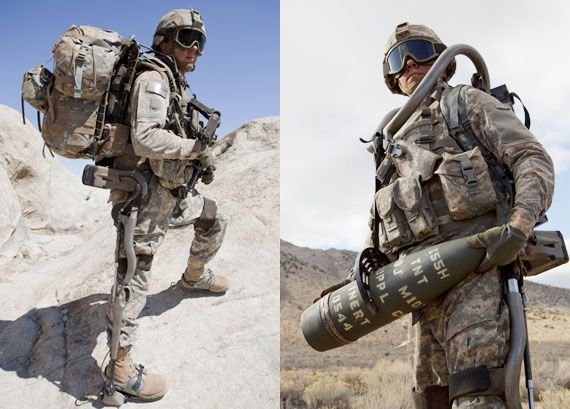
2.-Cyberdyne HAL-5
The HAL was news in 2011, during the Fukushima accident, when the Japanese company Cyberdyne presented its robotic garments as protection in case of accidents in the future.
Although no existing model resistant to radiation, the HAL-5 Type-B became the first robotic exoskeleton aimed at receiving a global safety certificate. According to Cyberdyne, 330 exoskeletons have been leased to hospitals in Japan, where they are used by patients with muscle weakness or deficiencies due to leakage or damage to the spine.
The company says it has the first "cyborg-type robot" because the system interprets the weak electrical signals in the skin around the damaged muscles and moves the motorized joints in response to these signals.
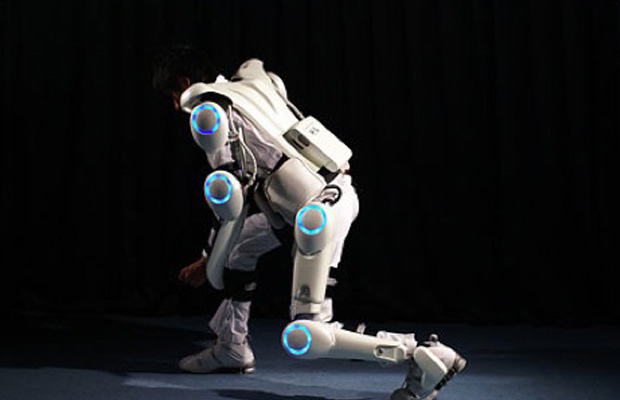
3.-Muscle Suit de Kobalab
Muscle Suit is a creation of Hiroshi Kobayashi, professor in Engineering by the University of Sciences of Tokyo, and consists of a suit that will serve as support for the hip, in order to load up to 30 kilograms of weight. Its operation is based on a group of nylon-lined cylinders that inside have an air chamber, capable of obtaining a pulling force of up to 200 kilograms when inflated with compressed air, thus serving as a kind of "pneumatic artificial muscle". "
Unfortunately, the system is not automatic, that is, it is not able to detect when we need that additional help, for this, we need to activate the artificial muscle through two buttons, plus we need to connect a compressed air system. In short, we will bow to the object we need to load, but first, we must press the buttons to activate the system.
Its design was initially thought to help people with reduced mobility, as a rehabilitation system, but due to its good results, now it not only serves to heal injuries but also to prevent them. Its main uses are within the construction industry, where lifting heavy objects is part of daily tasks, which has brought mosty back injuries, hence the importance of a suit of this type, which today serves to help reduce this type of work problems.
In addition to this, the artificial muscle that works with pneumatic technology can be used in other types of suits, such as for example to give strength to the arms. According to its creator, since 2014 it has managed to distribute more than 1,000 units of this type of exoskeleton and hopes to continue advancing in its development to implement improvements, reduce costs and thus reach a greater number of users.
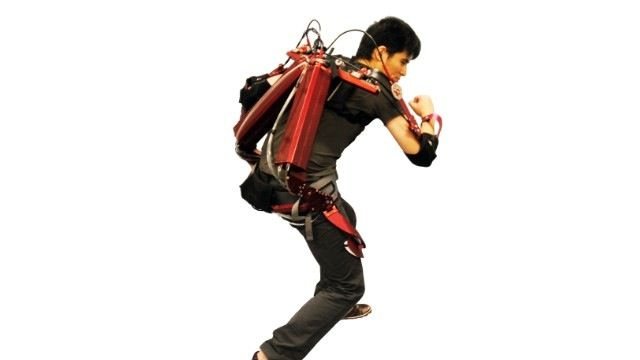
4.-Argo ReWalk y EKSO Bionics
The last ex-skeletons of ReWalk Robotics will allow people with paraplegia to walk again recognizing changes in their center of gravity.
In recent months we have seen a huge advance in the market for human prostheses, manufactured in ultra-lightweight materials and equipped with high sensitivity sensors that allow people to move their limbs by just thinking about it, that is as if they did not carry a prosthesis, without delay in the action.
Likewise, many companies are developing exoskeletons that can be applied in many fields, such as to allow factory workers to carry heavy loads. In this sense, the latest model of the company ReWalk Robotics goes further.
This company has been developing exoskeletons for years for people with paraplegia to allow them to walk again with the help of an external structure. Now they have introduced the Personal 6.0, their exoskeleton more "small", light and fast to date.
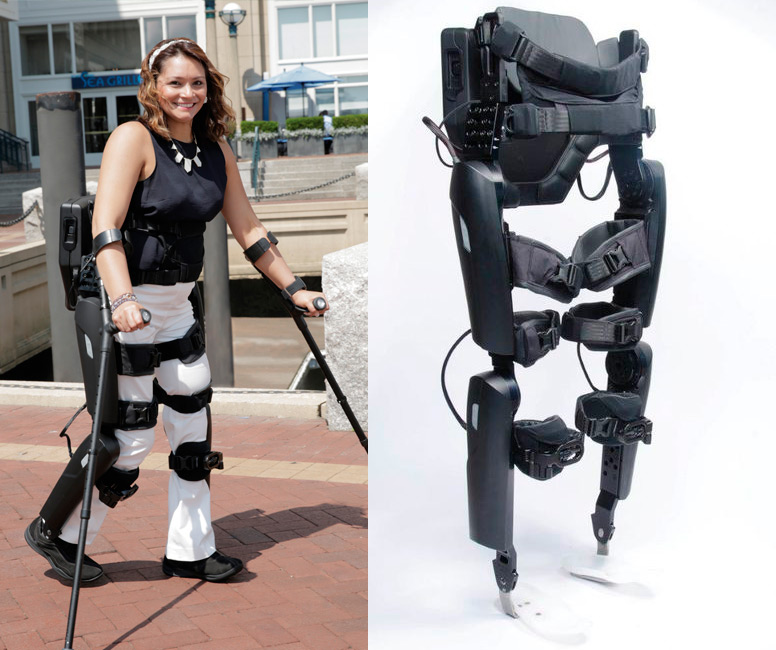
5.- X-1 de la NASA
How about an exoskeleton that is able to inhibit someone's movements, how does it help us? It does not sound like a good idea on Earth, but in the environment without space resistance, NASA astronauts may benefit a little from the difficulties of moving.
The X-1, with 25 kg, is designed to help astronauts exercise in microgravity conditions, and can become crucial for deep space missions. It can also improve the health of the crew aboard the International Space Station, and, potentially, in future long-duration missions to distant asteroids or Mars.
On the other hand, these legs have the advantage of helping the movement, with its four motorized joints, if it is used on Earth, but at present, it is not known if they will be manufactured on a large scale.
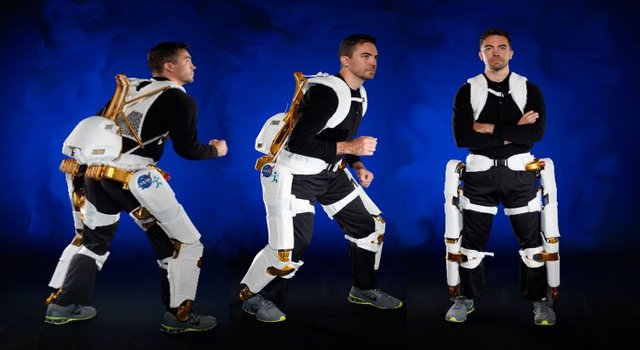
6.- XOS
Do you remember the cargo robot that Ripley handled in Alien 2? Well, XOS comes to be more or less the same (well that's little brother). XOS is a kind of robot suit formed by a series of sensors that transform the movements of the pilot in movements of the hydraulic "muscles" located in the arms and legs. Thanks to this the user can multiply his strength in an amazing way and easily handle objects of about 90 kilos like who takes a pen. Well, maybe not so much, but it is estimated that the sensation is similar to that of lifting a tenth of the real weight.
There are already some XOS videos out there where you can see that it is a team with a very low reaction time and fairly quick movements, which is vital in many situations
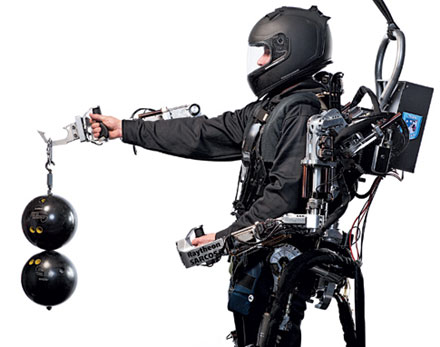
7.- XOS 2
The new XOS 2 is a revised version of the original (which they simply considered "a proof of concept"), which frontally attacks the classic problem that every engineer must face when thinking about an exoskeleton: Its source of energy. The XOS 2 is more resistant than the first XOS, but the best part is that it needs fifty percent of energy to perform an action. The aim of the engineers is to reduce this consumption up to 20 percent of the original level, to make possible a "rechargeable" version, without the power cord, which delivers a range of several hours. Of course, one of the possible functions of the XOS 2 is in combat, but it is clear that its maximum utility peak will be located in the logistics aspect. In theory, a fighter plane could be reassembled in a fraction of the time, since the strength of an XOS 2 would allow an operator to raise a missile with his own hands.
According to the official announcement, it is expected that the "normal" version of the XOS 2 can operate in five years actively, while for the version without a cord, it will take between three and five more years.
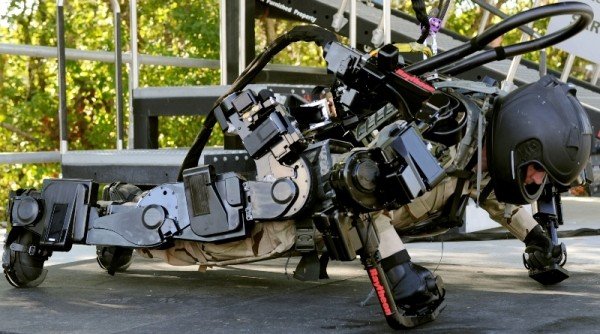
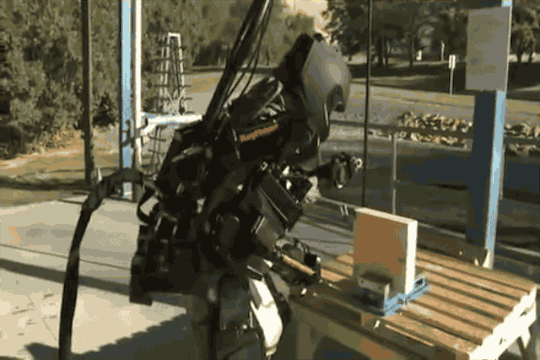
It is very likely that in the not too distant future we will have the possibility of seeing 100% operative, these exo-suits, applying to different tasks, and being of great utility and help to us.
I hope you liked this post, for more information visit these pages.
https://www.xataka.com/robotica-e-ia/muscle-suit-el-traje-que-nos-permitira-cargar-hasta-30-kilos-sin-esfuerzo
http://omicrono.elespanol.com/2015/07/el-exoesqueleto-mas-ligero-y-rapido-que-permite-andar-a-personas-paraplejicas/
https://clipset.20minutos.es/sarcos-raytheon-xos-exoesqueleto-militar/
nice post
thanks, it's a pleasure.
Good job.
Real interesting post mate, well done :)